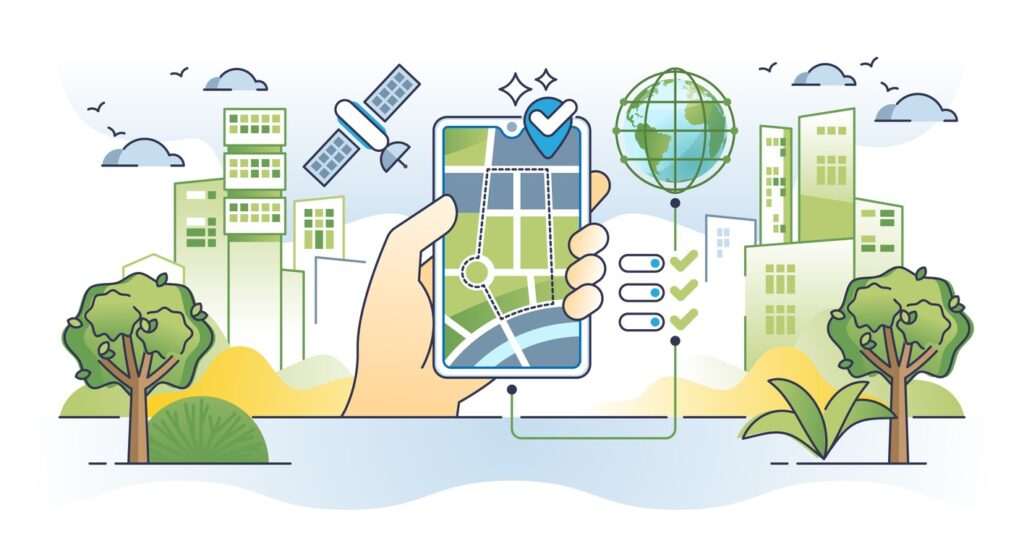How Web3 Technology Could Transform the Intersection of Digital and Brick-and-Mortar Experiences
As eCommerce continues its relentless growth, traditional brick-and-mortar stores are grappling with how to attract customers back through their doors. The COVID-19 pandemic exacerbated this challenge, with foot traffic numbers slow to recover even years later. Early 2023 data shows that foot traffic in physical stores has decreased monthly compared to 2022, underscoring the ongoing shift in consumer behavior. However, the digital realm offers sophisticated advertising techniques that can help bridge the gap between online browsing and in-store shopping. Among these, geo-framing, demographic, and behavioral targeting stand out. But as powerful as these tools are, the next evolution in retail lies at the intersection of these traditional methods and emerging Web3 technology.
The Traditional Landscape: Geo-Framing and Geo-Fencing
To understand how Web3 could revolutionize the retail landscape, it’s essential to start with the traditional tools already in use. Two such techniques are geo-fencing and geo-framing.
Geo-Fencing: This method creates a virtual perimeter around a specific location. When a mobile device enters or exits this area, it triggers ads to be served to that device. While effective to a point, geo-fencing is limited by its reliance on users enabling location services on their devices, and it lacks precision—often only accurate down to a quarter mile, which can lead to wasted ad spend.
Geo-Framing: On the other hand, geo-framing takes a more precise approach by using historical location data. This allows advertisers to target devices that were seen at a specific location within a certain timeframe, often up to 6 months in the past. The precision of geo-framing can go down to a single meter, making it a more efficient use of advertising budgets.
Use Cases for Geo-Framing:
- Competitor Targeting: Businesses can use geo-framing to engage customers who have visited competitors, targeting them with ads to sway their purchasing decisions.
- Event Targeting: By targeting consumers who attended specific events, businesses can maintain engagement after the event, keeping their brand top of mind.
- Neighbor Targeting: Businesses can reach out to the physical neighbors of their past customers, banking on the idea that neighbors often share similar demographics and interests.
- Friends & Family Targeting: Geo-framing can even target the friends and relatives of recent customers by identifying devices that have visited those customers’ homes.
These techniques, while advanced, still operate within the confines of traditional digital marketing. They depend on third-party platforms, which collect and control consumer data, often at a high cost to businesses. The next step forward lies in rethinking how data is owned, shared, and monetized—and this is where Web3 comes into play.
Enter Web3: A New Paradigm for Retail
Web3 represents a shift from the centralized control of data to a decentralized model where consumers have ownership and control over their personal information. This shift has the potential to transform not just online experiences but the way brick-and-mortar stores engage with their customers.
Data Ownership and Monetization: In a Web3 world, consumers would own their data, deciding when and how it is shared. Rather than third-party platforms profiting from consumer data, individuals could directly benefit from their information. Imagine a scenario where consumers opt into geo-framing campaigns by sharing their location data directly with businesses, receiving compensation for their participation. This model would build trust, as consumers know their data is being used with their consent and for their benefit.
Personalization at a New Level: Web3 technology could enable an unprecedented level of personalization. Because consumers control their data, they can ensure that the ads they see are relevant and beneficial. For businesses, this means more effective marketing campaigns that resonate with the right audience at the right time. By integrating blockchain technology, businesses can create verifiable and secure ways to engage with consumers, offering tailored rewards and promotions based on real-time interactions.
Reducing Costs and Empowering Local Businesses: One of the most significant benefits of Web3 is the potential to reduce costs for businesses by cutting out the middlemen. Traditional advertising platforms charge high fees for access to consumer data and targeting tools. In contrast, a decentralized Web3 platform would allow businesses to connect directly with consumers, lowering costs and making marketing more accessible to small and local businesses.
The Future of Geo-Targeting with Web3
While geo-framing and geo-fencing are powerful tools today, integrating them with Web3 could unlock even greater potential. Here’s how:
- Competitor and Event Targeting: Imagine a future where businesses not only target customers who have visited competitors or attended events but also offer those customers ownership of their data and a stake in their engagement. This could foster loyalty and encourage repeat visits, as consumers feel valued and rewarded for their participation.
- Community-Driven Engagement: Web3 could enable community-based campaigns where consumers are incentivized to promote businesses within their networks. For example, a local business could offer rewards to consumers who check in with their friends or family, creating a ripple effect that drives more foot traffic without the need for costly third-party platforms.
- Real-Time Rewards and Loyalty Programs: With Web3, loyalty programs could become more dynamic and personalized. Instead of collecting points, consumers could earn tokens or other digital assets that have real value, redeemable across various platforms. These rewards could be tied to specific behaviors, such as visiting a store after seeing an ad or referring a friend, making the marketing experience more interactive and engaging.
Integrating Digital and Physical Store Experiences with Web3
The future of retail lies in seamlessly integrating digital and physical experiences. Web3 has the potential to make this integration more efficient and consumer-friendly.
Enhanced Buy Online, Pick Up In-Store (BOPIS) Models: Web3 could streamline BOPIS models by allowing consumers to earn rewards for choosing this option, creating a more seamless shopping experience that benefits both the consumer and the business.
Smart Contracts for Transactions: Web3’s blockchain technology could enable smart contracts that automatically trigger rewards or discounts when certain conditions are met, such as a customer visiting a store after engaging with a digital ad. This automation reduces friction and ensures that consumers receive their rewards instantly, enhancing the overall shopping experience.
Bridging Online Ads with In-Store Displays: Web3 could also make it easier for businesses to align their digital creatives with in-store displays. By using decentralized platforms, businesses can ensure consistent messaging across all touchpoints, creating a cohesive brand experience that resonates with consumers both online and offline.
Building Community and Loyalty in the Web3 Era
Perhaps one of the most exciting possibilities of Web3 in retail is its potential to build stronger communities. In the current landscape, loyalty programs are often transactional, offering discounts or points in exchange for purchases. Web3 can take loyalty to the next level by fostering genuine relationships between businesses and consumers.
Tokenized Loyalty Programs: Instead of traditional points, consumers could earn tokens that represent real value. These tokens could be used across different businesses, creating a network of rewards that incentivizes consumers to support local shops. This approach could transform how consumers think about loyalty, shifting from a transactional mindset to one of community and collaboration.
Community-Owned Data Networks: In the future, communities could create decentralized data networks where businesses and consumers collaborate on marketing campaigns. These networks could allow consumers to pool their data and collectively decide how it’s used, ensuring that both parties benefit from the relationship.
Crowdsourced Marketing Initiatives: Web3 could also enable businesses to run crowdsourced marketing initiatives, where consumers become active participants in promoting the brand. By offering rewards for user-generated content, social media shares, or event participation, businesses can tap into the creativity and enthusiasm of their community, creating a more authentic and engaging brand presence.
Conclusion: The Web3 Revolution in Retail
As brick-and-mortar stores navigate the challenges of the digital age, Web3 technology offers a path forward that empowers both businesses and consumers. By decentralizing data ownership, reducing costs, and fostering more meaningful relationships, Web3 has the potential to transform how retail operates at the intersection of digital and physical experiences.
While traditional geo-targeting techniques like geo-framing and demographic targeting remain valuable, integrating them with Web3 could unlock new levels of precision, personalization, and participation. The future of retail is not just about driving foot traffic—it’s about creating a collaborative ecosystem where consumers and businesses thrive together.
As we look ahead, the possibilities for Web3 in retail are vast. From tokenized loyalty programs to community-owned data networks, this technology has the potential to reshape the way we shop, engage, and connect. The shift is happening, and the future of retail lies in embracing the opportunities that Web3 technology brings.






